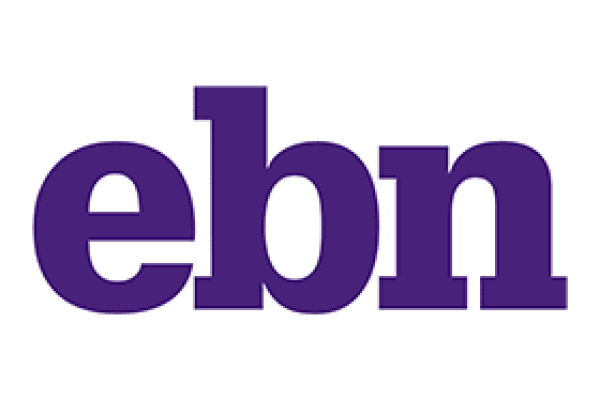Comments (0)
PLC Newsletter: How to navigate the Return-to-Office merry-go-round

How to navigate the Return-to-Office merry-go-round
Return-to-Office policies and practices continue to evolve, causing happiness for some and friction for others. The topic has taken over my news feed as companies attempt to get it right, but there is no “one right way.” However, while every organization is unique, they are not special. There are optimal ways to approach figuring out what best practice can look like for organizations, large and small.
What’s happening?
Most recently, organizations have been switching from a remote-first or remote-only policy to a hybrid model – anywhere from 1 to 4 days in the office. Some even moved back to fully in-person. The problem is that for many organizations, this has been an abrupt pivot in policy. The primary mistake was their stating or implying that the policy was permanent and that has proven not to be the case. New Farmers Insurance Group CEO Raul Vargas got pummeled in the news after he reversed the remote-first policy 1 year after it was implemented. (Fortune, 2023) The kicker here was that employees were previously told productivity was at or above pre-pandemic levels.
Why does this matter?
For many employees, this reversion has broken the social contract, eroding the trust that is the glue that bonds people together. Livelihoods and how employees have redesigned their lives post-pandemic have been threatened. As a result, employees have entered into “stay or go” conversations, while protests, petitions, walkouts and work slow downs have also occurred. Employee mental health has taken a hit as have company reputations. All of this undermines employee engagement, productivity and profitability.
This is not to say that companies cannot evolve and adapt. As with anything, the “why, what, and how” you do anything and everything matters. Flexibility, similar to compensation and benefits, is a tangible benefit that an employee considers when evaluating their ideal work environment. And what flexibility means and what it enables each person to do will look different. Discounting that fact creates a blind spot for employers. AT&T CEO John Stankey said he is willing for folks to leave if they don’t get on board with their new hybrid policy. (Bloomberg, 2023)
Well, there is a cost to that. It can take 2-3 years to recover the productivity resulting from headcount reductions. While it may not be a primary concern for extremely large organizations who may be cushioned by bloated pandemic-era hiring, it will likely be a concern for mid-sized and small organizations. Regardless of size, it does take time to realign work and gain efficiencies in workflow.
What’s motivating this change?
The key drivers for the about-face on being in the office are often the desire to sustain culture, to enhance communication and collaboration, and to promote creativity and innovation. Specifically, with respect to culture, communication and collaboration, the conversation has centered around mentorship of early career employees and access to promotion opportunities.
There is an underlying assumption that in-office time will solve the aforementioned primary drivers. I believe that assumption is misguided because it also assumes that management and leadership within the organization have the capabilities to create and sustain those drivers. While there are elements of being in-person with colleagues that make culture, communication, collaboration, creativity and innovation easier, they are not a given. If remote work is a blocker for access to mentorship and pathways to promotion, then there are inequities within the system that need to be addressed.
What are key considerations to address these challenges?
I am going to use the R.E.I.G.n™ model to frame some key questions to consider as you navigate the return-to-office journey.
Intention: Frame purpose and desired outcomes for all activities
Q: What experiences do you want to create for your team (or what do you want to experience for yourself) when in the office?
There are many inputs that go into creating organizational culture. Understanding what the ideal outcome is for yourself and for your team requires starting with the end in mind, knowing what you are solving for. There are behaviors and actions that must be thoughtfully designed and deployed in order to create the conditions for culture to come to life. Hopefully, in-office time will be focused on practices that build rapport and belonging to enhance team performance. Everyone needs “get it done” work time free from distraction. The work that happens in the office need not be the same type of work that happens at home.
A person in my circle who is early in his career journey commutes into the office 3 days a week. His manager is in another location. When he goes in-office, nobody talks to him. What’s the point? In this case, being in the office is a “check-the-box” exercise.
Rapport: Center trust and compassion to facilitate effective communication
Q: What are the communication norms that will bring our workforce together while leaving space for our differences?
Many of us are working in multi-generational workforces. Command and control is a mechanism of the past upon which many seasoned employees continue to operate. On the other side of the spectrum, Gen Z have proven to be purpose-driven, digital natives and by 2025 will account for ⅓ of the workforce. (World Economic Forum) Communication norms within our organizations vary significantly and simply being present in the office is not sufficient to close the gap.
Emotional intelligence is going to be even more important in the world of work as we attempt to align on norms to enhance collaboration. Often framed as a “soft skill,” which I believe is a misnomer since there are technical elements to navigating human behavior that fall outside of experiential learning, we must think deeply about the concrete ways to intentionally build communication skill. Which brings me to my next point.
Greatness: Identify strengths at individual, team and organizational levels
Q: What knowledge, skills and abilities do your people managers and team leads currently have and require to create the conditions for communication and, ultimately, collaboration?
While I believe that every employee is responsible for creating the conditions for effective communication, people managers and team leaders are ultimately accountable. Meaning, they own the overall outcome – a team’s collective performance. Data show that a key driver in whether you return-to-office depends on your level of positional authority.
While many managers are evaluated on “how” behaviors, e.g., active listening, on their performance reviews, those behaviors are often overshadowed by the “what,” i.e., getting things done. People care about the things against which they are rated and compensated, so I would argue that giving the “how” greater weight may shift the focus towards investing in those learning and development opportunities to build those necessary emotional intelligence skills to sustain a culture of communication and collaboration within the team. These are strengths that can be flexed whether you are in-person or not.
Equity: Design and deploy transparent, replicable processes
Q: Are our people systems designed to bring everyone along regardless of whether they are in-person, hybrid or remote? If the answer is “no”, how do we close the gap?
Inequity in organizational systems and processes existed pre-pandemic and will continue to do so because they are designed and implemented by people. That said, we must continue to identify and analyze the actual and potential gaps in how we are creating and deploying people systems lest there be disparate treatment.
Before deciding on which employees needed to be in-person, hybrid or remote, one of my client organizations hired an external organization to evaluate how work is best performed to meet client needs. It was a process that was thoughtfully planned, executed and communicated that got buy-in and support throughout the organization prior to policy implementation.
I also want to note that many organizations are still leveraging remote talent on and offshore for high demand, highly-skilled roles. These jobs will eventually get filled because the work will only go undone for so long. If any high-value work is performed outside of a commutable distance, there will always be a need to collaborate with remote folks, manage performance, and ensure access and opportunity with respect to career development.
Recently, IBM CEO Arvind Krishna stated remote work may be hazardous to one’s career and not being in the office may negatively impact promotion opportunities. (Bloomberg, 2023) That sounds like he is admitting that the system has embedded bias. And his being open about it does not make it any better. Which brings me to my final point.
n = Quantify impact: Determine success metrics and ownership for all stakeholder groups
Q: What are the metrics for success such that organizations know what is working for individual employees and for teams?
We must continue to explore individual and team performance and how both are being evaluated regardless of whether or not someone comes to the office. There is a clear business case for understanding whether individuals and teams are operating at high, medium or low productivity because, at the end of the day, customer and client needs must be met to create and sustain profitability. However, we must invest time analyzing root causes for gains and losses to productivity, evaluate how that has changed over time, then map that against employee engagement. Then, we can step back to assess, holistically, how that aligns (or not) to individual, team and organizational success metrics. This, of course, ties us back to intention and ideal outcomes to ensure that what we say we want to achieve actually aligns with what we are doing.
Whenever we talk about metrics, we must pause and look at the underlying data. According to a 2023 McKinsey & Company Real Estate report, organizations are pretty good at incorporating wellbeing into workplace experience decisions and know which in-person experiences matter for employees; however, there is a gap when it comes to having a clear vision for the workplace experience strategy and how data informs that strategy. Additionally, the report highlighted the opportunity for managers to be trained on tracking performance rather than tracking physical presence. That sounds like the tail wagging the dog.
What’s a Solid Next Step for You?
As a reminder, there is no one size fits all approach for navigating return-to-office. It requires a nuanced approach based on how your organization operates and the long-term strategy. It will take time for things to progress in a way that creates a win-win for both employees and employers.
What is an action you can take to enhance your experience or that of your team with respect to navigating return-to-office or a hybrid work environment?
What are your key considerations? What support do you need, if any, before you take action?
Want support thinking through a current challenge? I am happy to hop on a call to help you unpack it and identify a solid next step. I’ve opened up a window in my July calendar. Space is limited. BOOK A 20-MINUTE CALL
Final Thought
Cisco Systems has been #1 on Fortune’s 100 Best Companies to Work For list for 3 years in a row. In a recent Fortune interview, CEO Chuck Robbins said something that resonated with me. “Employees want to work for human beings.” Obvious, right? Unfortunately, in the daily grind, that simple fact can often get lost. Cisco opened new New York City office space in April 2022, yet they are not requiring return-to-office. Their intention is to “make the office a magnet instead of a mandate.” Instead of thinking, “My company is nothing like Cisco!” Think about the spirit of the statement and what is possible.



LEAVE A REPLY
Your email address will not be published. Required fields are marked *